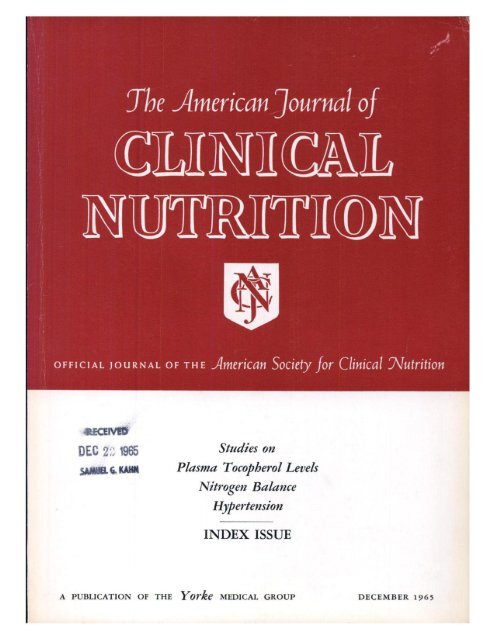与油炸食品消费相关的肠道微生物群与肥胖、脂肪分布和心脏代谢疾病有关:来自两个大型纵向队列和兄弟比较分析的结果
IF 6.9
1区 医学
Q1 NUTRITION & DIETETICS
引用次数: 0
摘要
背景:在前瞻性队列研究中,油炸食品消费、肠道微生物群、肥胖和心脏代谢疾病之间的关系尚不清楚。目的:我们旨在探讨油炸食品消费与肠道微生物群的关系,以及油炸食品消费相关微生物群与肥胖和相关疾病的关系。方法:我们分析了来自WELL-China队列(基线2016-2019)的6637名个体和来自Lanxi队列(基线2017-2019)的3466名个体,随访至2024年6月24日。面对面访谈提供了油炸食品消费和其他协变量的数据。对基线收集的粪便样本中的16S rRNA数据进行分析,鉴定出微生物属。采用双能x线吸收仪(DXA)评估体成分。微生物组多变量线性关联模型(MaAsLin)有助于在横断面分析中确定与油炸食品消费频率相关的属。在随访期间,Cox回归模型检验了油炸食品消费相关微生物群与心脏代谢疾病的关系。兄弟姐妹比较分析采用内间(between-within, BW)模型控制未测量的家族混杂因素。结果:25个微生物属与油炸食品消费频率显著相关。利用这些属,我们构建了一个与油炸食品消费相关的微生物群指数。两个队列的荟萃分析发现该指数与总体肥胖测量(BMI)呈正相关(β系数,0.26;95%置信区间(CI), 0.19-0.32)和中心脂肪分布参数(包括雌雄同体脂肪比(β, 1.48;95% ci, 1.14-1.82))。纵向分析表明,与油炸食品消费相关的微生物群指数越高,患心脏代谢疾病的风险越高,糖尿病的调整风险比(95% CI)为1.16(1.07-1.27),主要不良心血管事件的调整风险比为1.16(1.06-1.26)。同胞比较分析也得出了类似的结果。结论:油炸食品消费相关的微生物群与肥胖、中心脂肪分布和心脏代谢疾病的高风险相关,强调饮食选择在慢性疾病的管理和预防中的重要性。本文章由计算机程序翻译,如有差异,请以英文原文为准。
Fried food consumption-related gut microbiota is associated with obesity, fat distribution, and cardiometabolic diseases: results from 2 large longitudinal cohorts with sibling comparison analyses
Background
In prospective cohort studies, the relationship between fried food consumption, gut microbiota, obesity, and cardiometabolic diseases remains unknown.
Objectives
We aimed to explore associations of fried food consumption with gut microbiota and associations of fried food consumption-related microbiota with obesity and related disorders.
Methods
We analyzed 6637 individuals from the Wellness Living Laboratory China cohort (baseline 2016–2019) and 3466 from the Lanxi cohort (baseline 2017–2019), with follow-up until 24 June, 2024. Face-to-face interviews provided data on fried food consumption and other covariates. Analysis of 16S ribosomal ribonucleic acid data from fecal samples collected at baseline identified microbial genera. Body composition was evaluated using dual-energy x-ray absorptiometry. The microbiome multivariable associations with linear models helped identify genera associated with the frequency of fried food consumption in the cross-sectional analysis. Cox regression models examined the relationship of fried food consumption-related microbiota with cardiometabolic diseases during follow-up. Sibling comparison analyses were used to control for unmeasured familial confounders using the between-within model.
Results
Twenty-five microbial genera were significantly associated with fried food consumption frequency. Using these genera, we constructed a fried food consumption-related microbiota index. Meta-analysis of both cohorts found a positive relationship of this index with overall adiposity measures [body mass index (kg/m2)] [β coefficient: 0.26; 95% confidence interval (CI): 0.19, 0.32] and central fat distribution parameters [including android-gynoid fat ratio (β: 1.48; 95% CI: 1.14, 1.82)]. Longitudinal analyses indicated that a higher fried food consumption-related microbiota index was linked to a higher risk of developing cardiometabolic diseases, with adjusted hazard ratios (95% CI) of 1.16 (1.07, 1.27) for diabetes and 1.16 (1.06, 1.26) for major adverse cardiovascular events. Sibling comparison analyses yielded similar results.
Conclusions
Fried food consumption-related microbiome is associated with a higher risk of obesity, central fat distribution, and cardiometabolic diseases, emphasizing the importance of dietary choices in the management and prevention of chronic diseases.
求助全文
通过发布文献求助,成功后即可免费获取论文全文。
去求助
来源期刊
CiteScore
12.40
自引率
4.20%
发文量
332
审稿时长
38 days
期刊介绍:
American Journal of Clinical Nutrition is recognized as the most highly rated peer-reviewed, primary research journal in nutrition and dietetics.It focuses on publishing the latest research on various topics in nutrition, including but not limited to obesity, vitamins and minerals, nutrition and disease, and energy metabolism.
Purpose:
The purpose of AJCN is to:
Publish original research studies relevant to human and clinical nutrition.
Consider well-controlled clinical studies describing scientific mechanisms, efficacy, and safety of dietary interventions in the context of disease prevention or health benefits.
Encourage public health and epidemiologic studies relevant to human nutrition.
Promote innovative investigations of nutritional questions employing epigenetic, genomic, proteomic, and metabolomic approaches.
Include solicited editorials, book reviews, solicited or unsolicited review articles, invited controversy position papers, and letters to the Editor related to prior AJCN articles.
Peer Review Process:
All submitted material with scientific content undergoes peer review by the Editors or their designees before acceptance for publication.

 求助内容:
求助内容: 应助结果提醒方式:
应助结果提醒方式:


